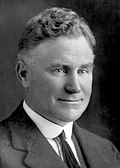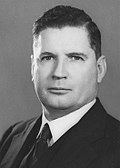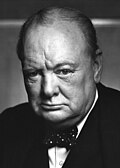
King George VI was the monarch of the United Kingdom, the Dominions, and the British Empire from 11 December 1936 until his death on 6 February 1952.
Contents
- List of prime ministers
- Australia
- Canada
- Ceylon
- India
- Irish Free State
- Malta
- New Zealand
- Northern Ireland
- Pakistan
- South Africa
- Southern Rhodesia
- United Kingdom
- References
- See also
He also was a founder and the first Head of the Commonwealth of Nations.
During his reign George was served by a total of 32 prime ministers; 4 from the United Kingdom, 7 from Australia, 2 from Canada, 1 from Ceylon, 1 from India, 2 from Ireland, 3 from Malta, 3 from New Zealand, 3 from Northern Ireland, 2 from Pakistan, 3 from South Africa, and 1 from Southern Rhodesia.































